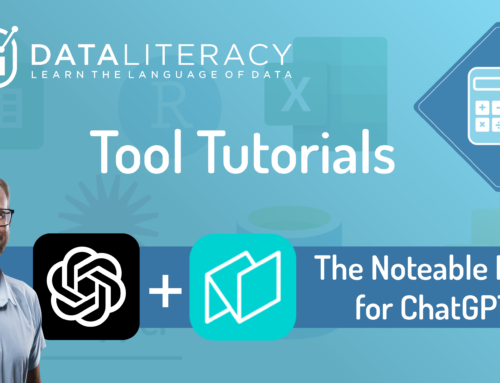ChatGPT 4o: Exploring the New Interactive Data Table Functionality
OpenAI recently added new interactive data table functionality to its newest and most advanced model GPT-4o, along with the ability to upload data files directly from Google Drive. This new feature opens the door for folks at all skill levels to interrogate and explore raw data tables and spreadsheets directly in the chatbot. Of course, we’ll still want to do our due diligence by looking closely at the python scripts that are being written in order to see exactly how it’s converting prompts into Python code to be able to interact with the tables, but this is a promising new step in making data analysis more accessible. In this video, Data Literacy co-founder Ben Jones explores what these new features mean for data analysts. Watch Ben filter, pivot, summarize, and visualize a spreadsheet of over 14,000 recorded earthquakes from USGS.
Before you start watching, add the data file used in the video to your own Google Drive account to follow along.
Learn more about how to get started with ChatGPT in our ChatGPT Basics course.
If you’re looking to enhance your (or your team’s) AI literacy, then sign up for our on-demand course AI Literacy Fundamentals: Helping You Join the AI Conversation. All course purchases come with the companion book AI Literacy Fundamentals.
If curling up with a book is more your learning style, you can purchase the book on its own on our Store (as PDF) or on Amazon (as kindle or paperback).
What to Ask When Choosing the Right AI Training for Your Team
Are you spearheading the search for the right AI training for your team? It’s tough to get up-to-speed on this tech yourself, and evaluate training resources. To make this task easier, we’ve compiled a list of questions you and your team should consider as you explore your AI training options called the AI Training Navigator.
Download the free ebook by submitting the form below, browse through the 33 questions, and mark any you haven’t thought about yet. Chances are, you’ve already tackled some of these challenges, but a quick review could uncover overlooked aspects of your planning. Revisit these questions and follow the flowchart in the ebook to plan out your next steps. We hope this is useful in assessing the AI training landscape, and please reach out if you have any questions: https://dataliteracy.com/contact





